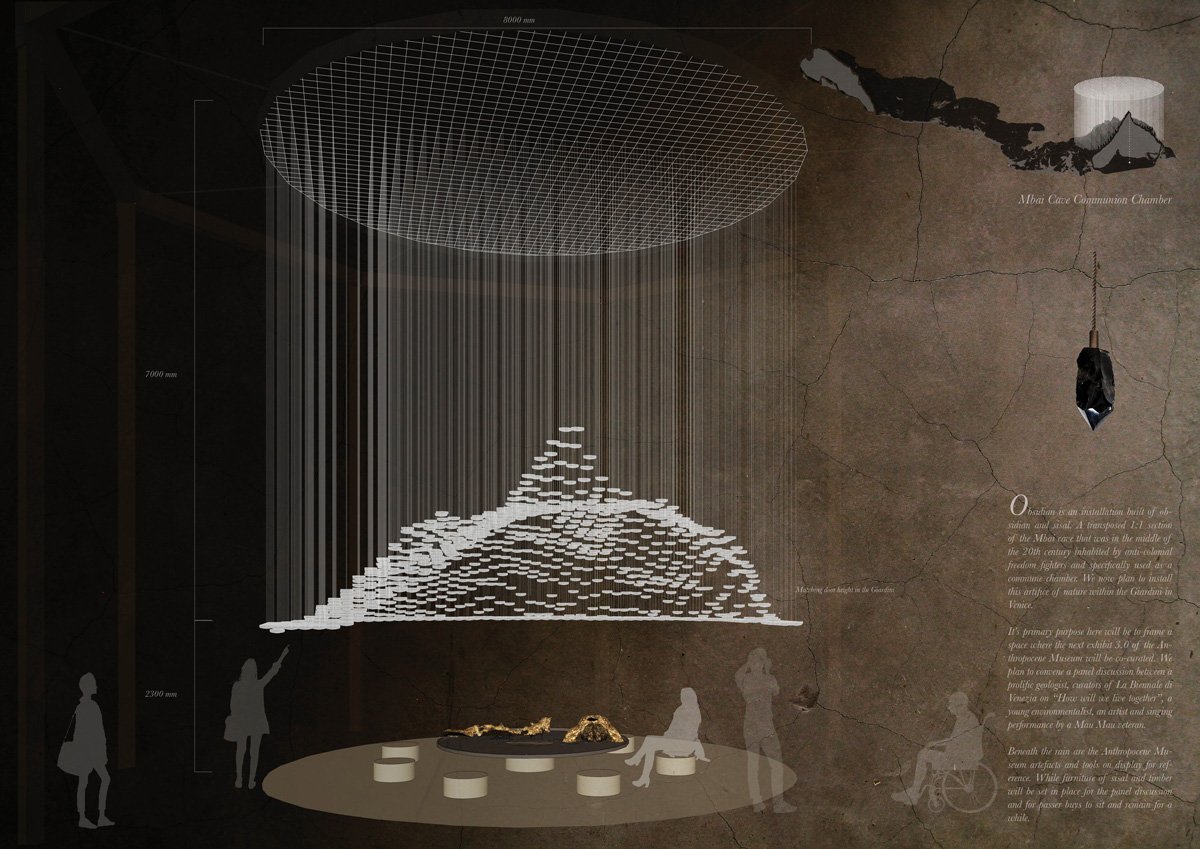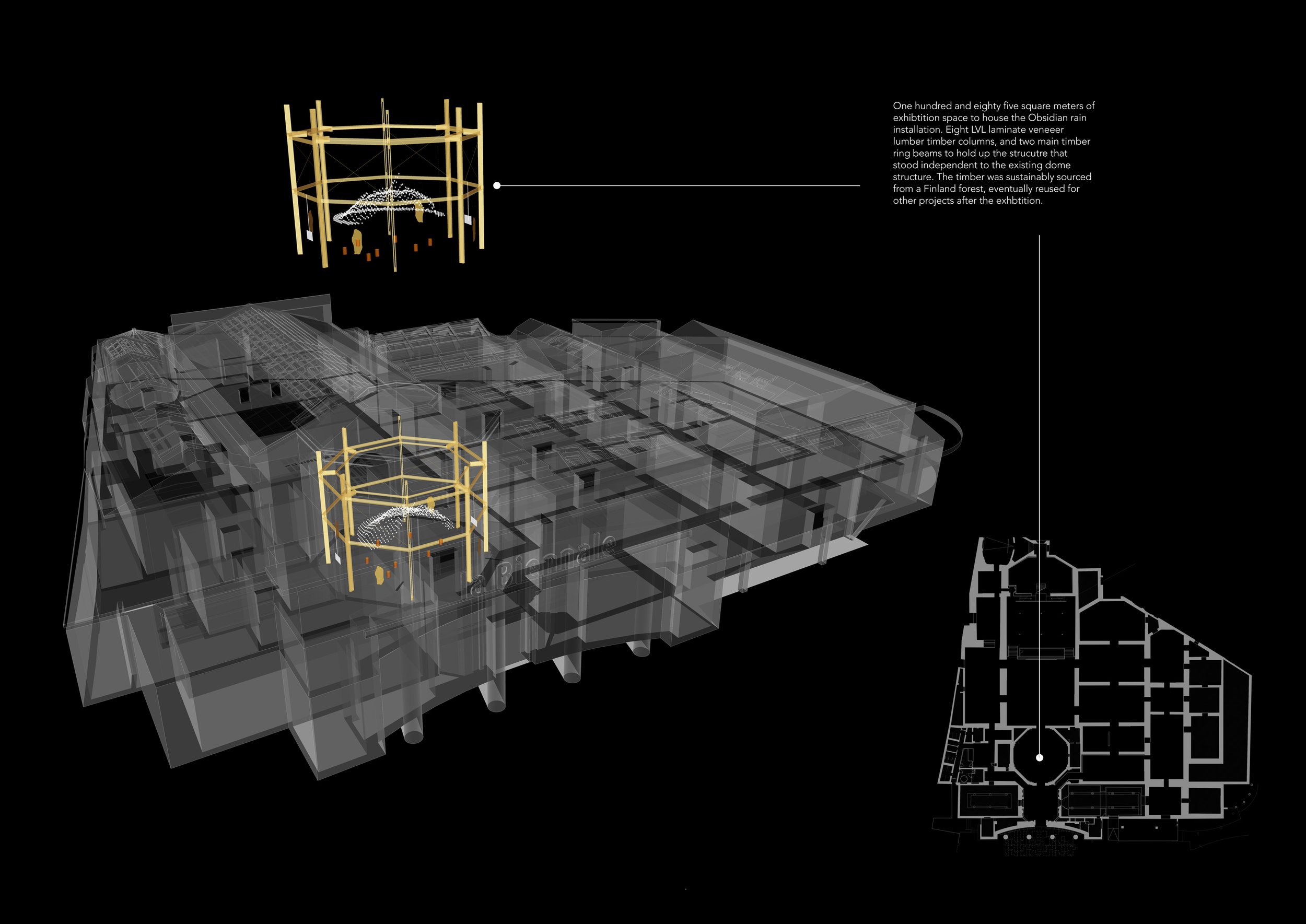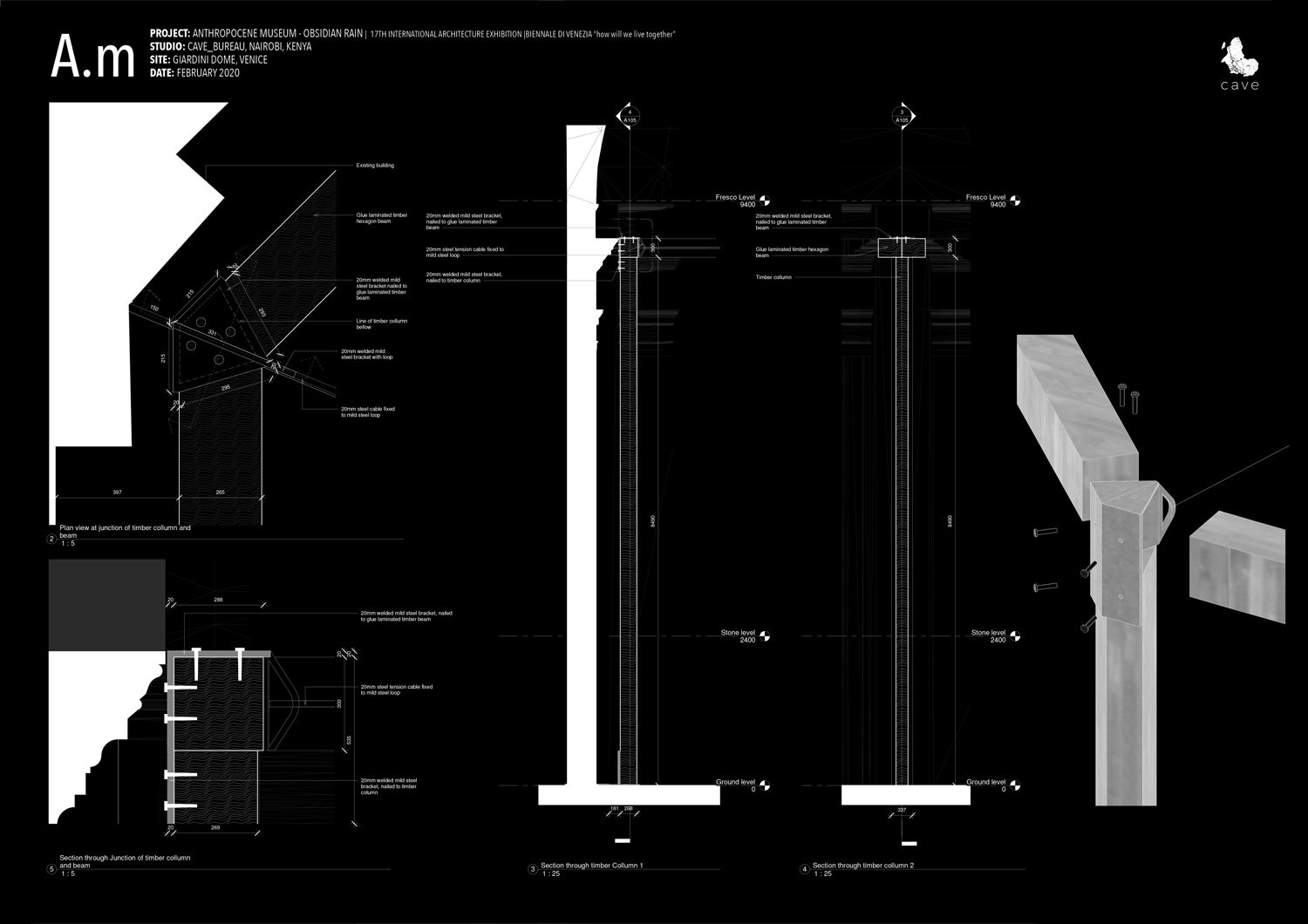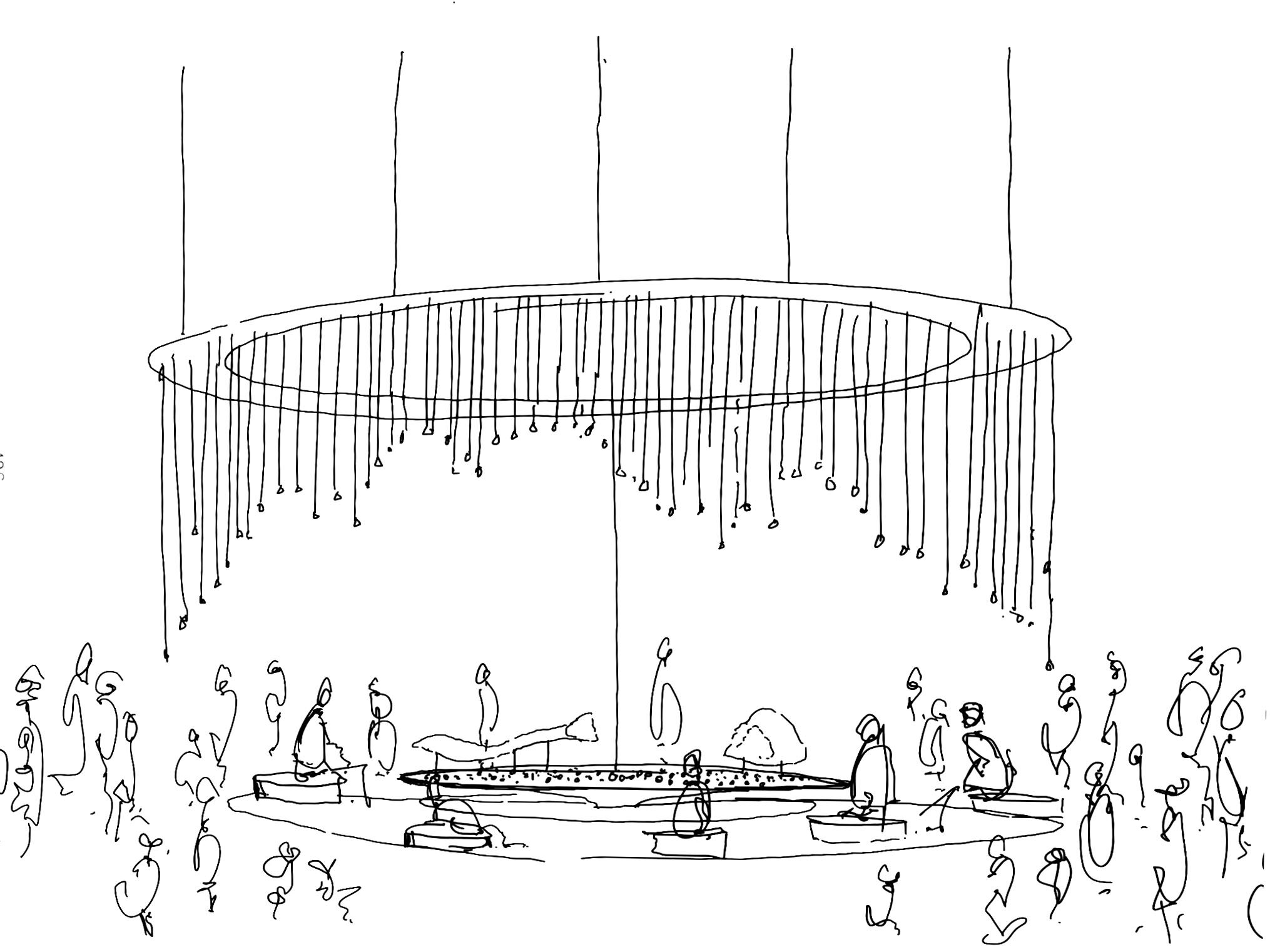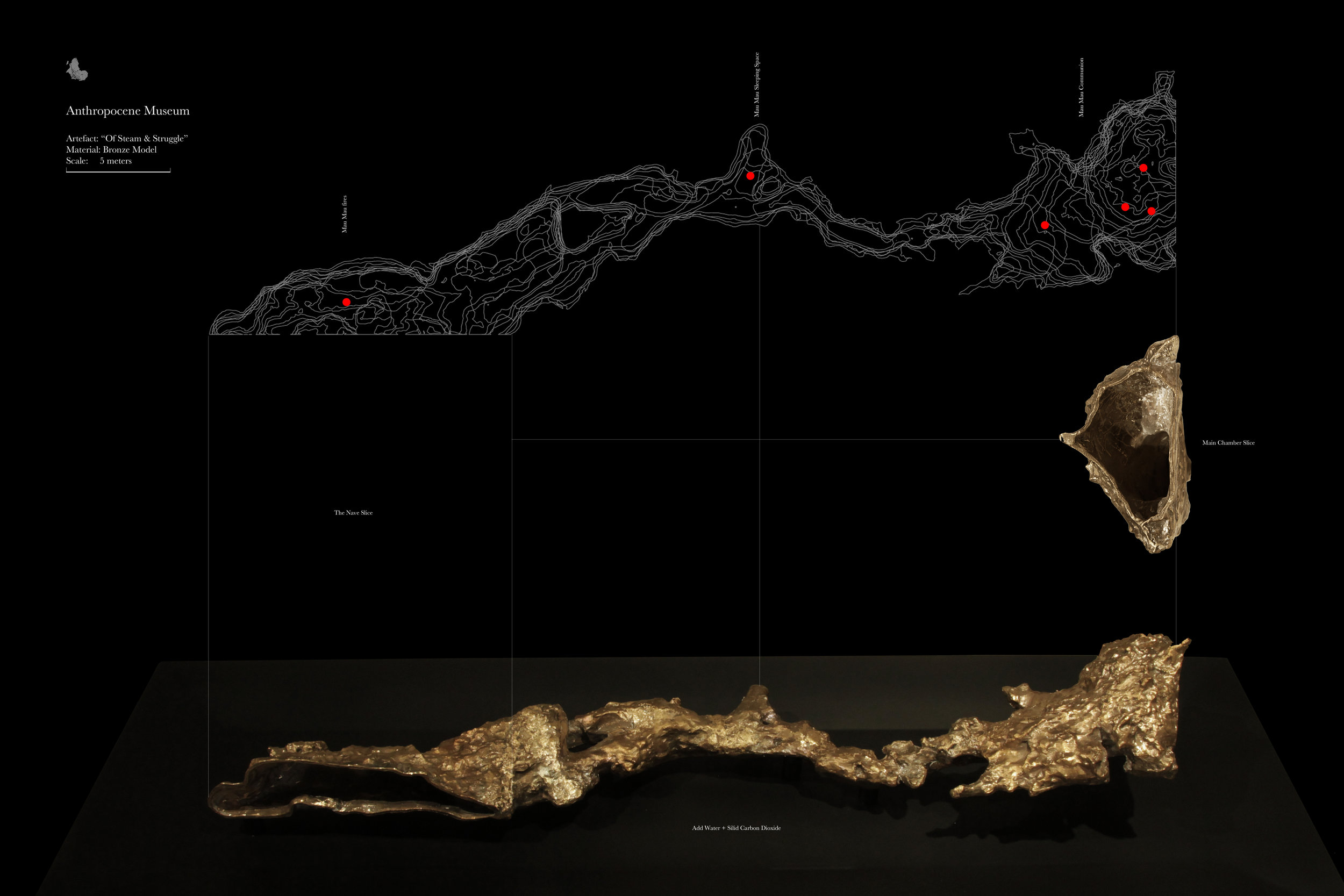ANTHROPOCENE MUSEUM 3.0 | Obsidian Rain
As the first Kenyan participants of the 17th International Venice Biennale of Architecture in 2021, we took a decolonial standpoint to transpose a 1:1 hanging section of the Mau Mau freedom fighters cave of Mbai, within the Giardini’s Central Pavilion, Galileo Chini, octagonal dome.
Here we imagined patrons of the exhibition entering the central pavilion to have a shared experience of the cave roof of 1,680 hanging obsidian stones lowered to the same point cloud levels taken from the Mbai Cave that we 3D scanned almost six years earlier. This cave was used by the Mau Mau to not only find refuge, but as a place to imagine an African state of the future, and as a site to orchestrate the resistance.
On the exhibition floor were three steel tables of 1:100 bronze models of the Mbai Cave, one sliced horizontally in plan to reveal the hanging section, while the other fully intact, the last table had a prime cut obsidian stone artefact. A hybrid of leather printed drawings hung from the edges of the cave. Across the floor were salvaged tree stumps for visitors to linger and look up and reflect on our collective architectural heritage and legacy of trauma. [Cave_bureau was awarded a special mention for this installation].
The cave was structurally supported using hexagonal laminate veneer lumber LVL, from the forests of Mensa in Finland that were recycled to other projects after the exhibition. Our question was, how will we live together when our recent colonial histories of oppression, extermination and erasure are still left open ended and not being redressed for past and future generations to register?
Exhibition production drawings.
Exhibition photographs by Francesco Gali
Bronze cast model at 1:100 showing the isolated section of the Mbai cave installation geometry that we transposed to Venice.



